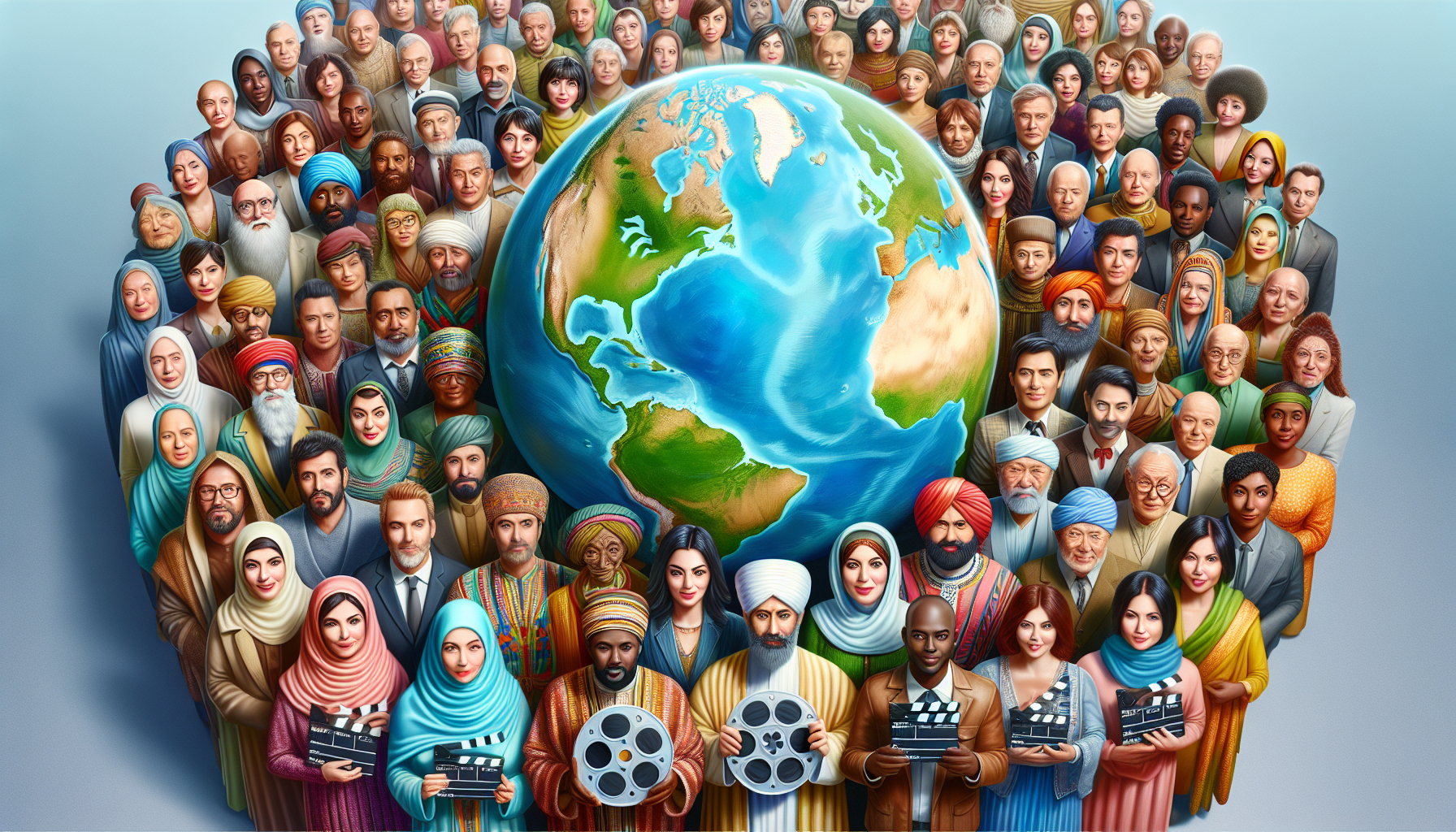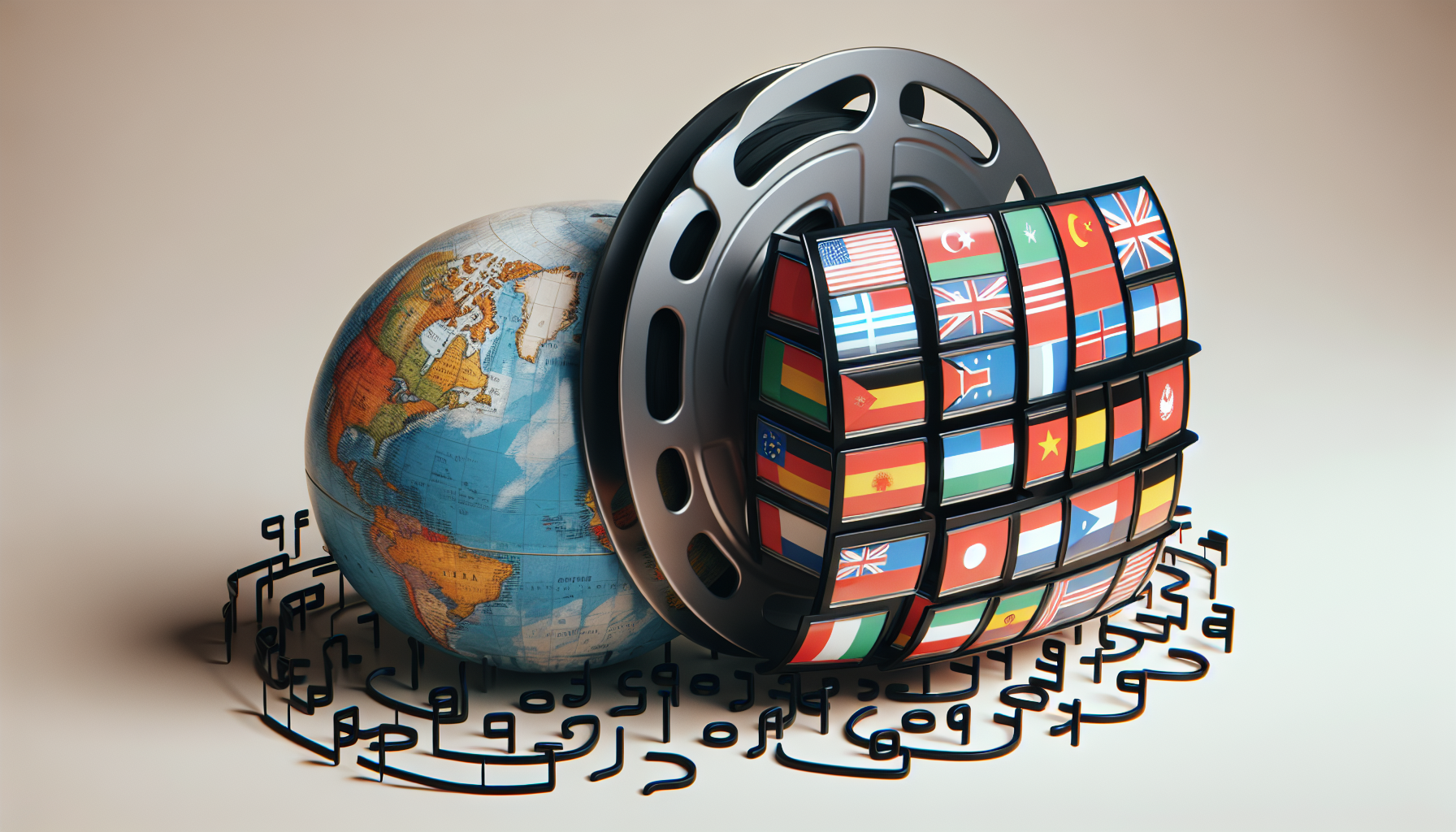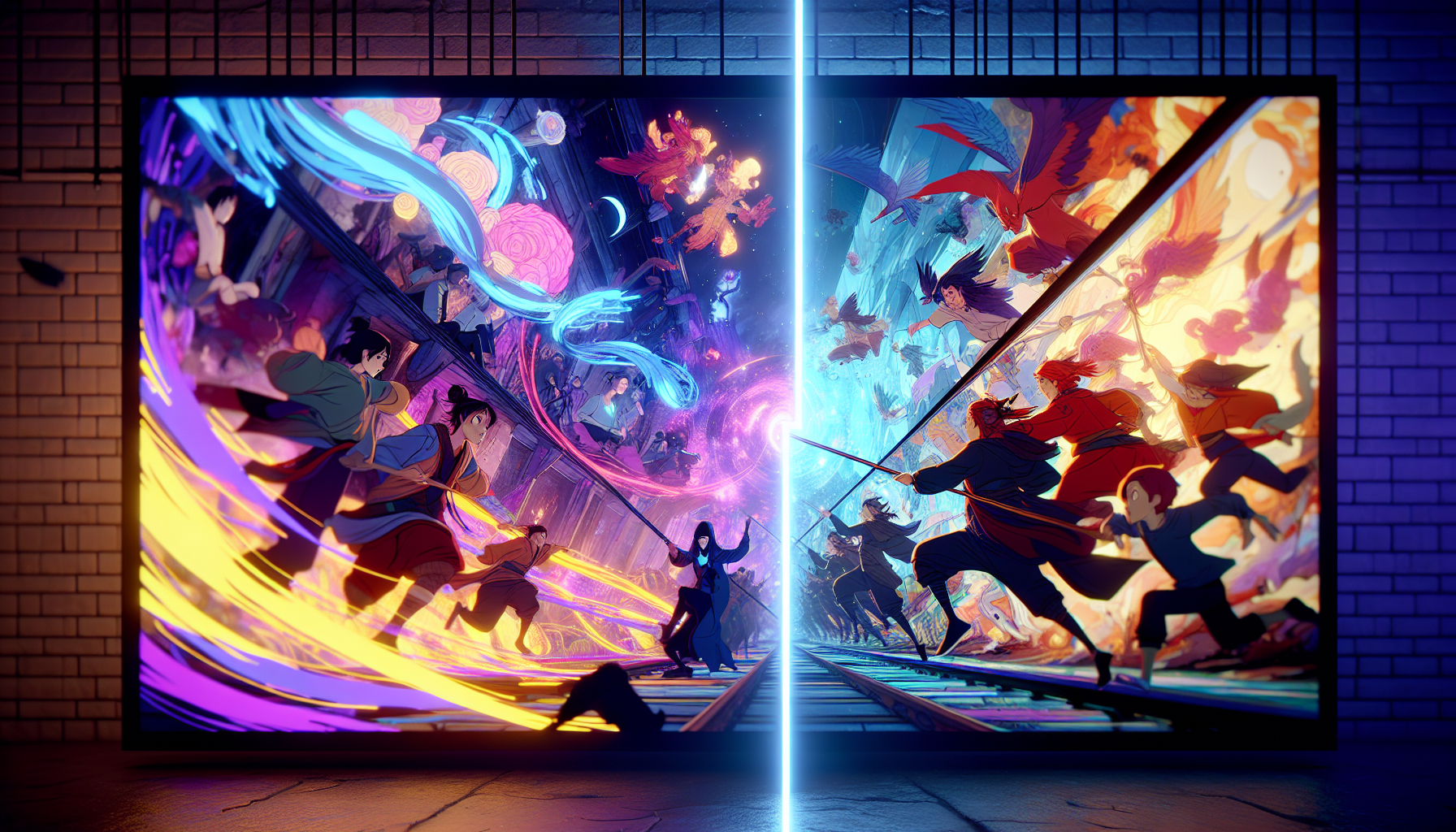Video content has become a powerful communication tool that transcends geographical boundaries. In order to truly harness the potential of Youtube videos and other types of audio and video files, one must be cognizant of the various nuances involved in the process to translate videos. It’s not just about converting words from one language to another, but also about understanding cultural context, maintaining consistency in tone and style, adhering to technical constraints, and more. Let’s delve deeper into these aspects and learn how to avoid common pitfalls to ensure accurate and effective video translations when we translate video content.
Key Takeaways
- Understanding cultural nuances is key to accurate video translation.
- Professional human translators should be used for quality and accuracy, while time constraints must also be managed effectively.
- Testing the translated video with the target audience is essential in order to ensure a high quality viewing experience.
1. Neglecting the Cultural Context

A common pitfall in video translation is the disregard for cultural context. Understanding cultural nuances goes beyond literal translation—it’s about comprehending the sentiments, idioms, and cultural references inherent in the language. This ensures that the translated material resonates with the intended audience and prevents misinterpretation or offense.
How can we ensure that these cultural elements are taken into account? Let’s look into the following points.
1.1 Understanding the cultural nuances and context is crucial when translating videos
The significance of grasping cultural nuances in video translation cannot be overstated. After all, these nuances encompass subtle disparities in language, gestures, customs, and social norms across different cultures. For instance, a phrase that is humorous in one culture may be offensive in another. Moreover, certain gestures or symbols may have different connotations in different cultures.
Thus, a keen understanding of these nuances ensures the precision and efficacy of conveying the intended message to the target audience when converting video content to another language.
2. Lack of Localization

A frequent oversight in video translation is the absence of localization. Customizing videos for your intended audience is crucial as it guarantees the proper localization of content, considering cultural nuances, language idiosyncrasies, and region-specific references. This is particularly important when transcribing video content for a global audience.
What does ‘localization’ entail in the context of video translations? Let’s investigate further.
2.1 Failing to adapt the translation to the specific target audience can result in miscommunication
Localization in video translations involves the adaptation of a video’s content, language, and cultural references to align with the specific target audience or market. This process includes modifying elements such as audio, subtitles, visuals, and more to ensure effective and engaging communication for the target viewers. Localization can improve the comprehension of video translations by aligning the content with the cultural and linguistic nuances of the target audience, making it more culturally pertinent and comprehensible.
When your audience is engaged and can connect with your brand through their preferred language, they would be more inclined to remember your brand and buy from you. Audiovisual content together with translated subtitles help to bridge the communication gap between you and your target market.
Using automatic transcription software can help streamline this video to text process. Reach out to Translated Right for professional translations that you can trust!
3. Poor Quality Translations

Delivering high-quality translations is of paramount importance. Poor quality translations can lead to misunderstandings, misinterpretations, and even damage the credibility of the message being conveyed. Accurate video transcriptions form the foundation for quality translations. However, the use of machine translation or unqualified translators can lead to inaccuracies and low-quality translations.
3.1 Accurate Video Transcriptions as a Foundation for Translation
Precise transcription is the cornerstone of effective video translation. It involves converting the spoken words in a video into written text, which forms the basis for the translation. The accuracy of this transcription process is critical. AI-powered tools, like Maestra, can automatically transcribe videos, providing a time-efficient way to ensure the accuracy of the translation. To transcribe video content effectively, utilizing such tools is highly recommended.
The key is to choose a tool that provides high levels of accuracy, such as Transkriptor or VEED, which boast accuracy rates of up to 99% and 95% respectively.
3.2 Using machine translation or unqualified translators can lead to inaccurate and low-quality translations
While machine translation might seem like a quick and easy solution, it often falls short in terms of accuracy and quality. Machine translation typically provides an accuracy rate ranging from 60-90%, which is lower than the near-perfect accuracy pursued by professional translators. Professional linguists have the certifications and experience in the translation industry to back-up their quality standard, whereas unqualified translators will not have the necessary expertise or understanding of cultural nuances to ensure the quality video transcription you deserve.
Therefore, it’s crucial to have a human translator who is well-versed in both the source and target languages to review and refine the translation for accuracy and quality. As one of the Top translation agencies in Asia Pacific, Translated Right has a wide pool of translators to serve your video transcription needs!
4. Ignoring Time Constraints

Video translation, like any project, is constrained by time. Ignoring time constraints can lead to rushed translations, potentially resulting in errors, inconsistencies, and inaccuracies. By allocating just a few minutes to properly plan and manage the translation process, these issues can be avoided.
4.1 Not considering the time constraints of the video can result in rushed or incomplete translations
Time constraints in video translation encompass:
- Strict time limits for voice artists
- Tight project deadlines
- Challenges in finding quick-working translators
- Time and space limitations specifically for subtitling
How might we skillfully navigate these constraints? We’ll outline some strategies.
Balancing workload, prioritizing quality, understanding client expectations, leveraging technology, fostering collaborative teamwork, and ensuring quality control while considering cultural relevance for the target audience are all strategies that can help manage these constraints.
4.2 Editing Tools to Refine Your Translated Video Content
Beyond managing time constraints, employing the suitable tools to polish the translated video content is vital. Tools such as SubtitleBee, Veed.IO, and HeyGen offer sophisticated editing features that allow you to modify the text file, delete or merge files, adjust timecodes, and make other necessary edits.
These tools can help ensure that the translated video is accurate, clear, and engaging for the audience.
4.3 Syncing Translations with Video Timing
Another crucial aspect to consider is the synchronization of translations with video timing. This ensures that the translated text is displayed on the screen in perfect alignment with the audio and visual components of the video. Tools like:
- HeyGen AI
- GPT-4
- 11labs
- wav2lip-2
- Checksub
Our platform can be utilized to streamline this process with just a few clicks, ensuring a seamless and immersive viewing experience for the audience in just a few clicks.
4.4 Collaborative Editing for Team Projects
Collaborative editing is particularly important for team projects. Tools that facilitate effective collaboration include:
- Filestage
- Adobe Premiere Pro
- Motionbox.io
- Frame.io
These tools allow team members to work together on the translation, share feedback, and make necessary edits in real time. This not only improves the quality of the translation but also helps manage time constraints more efficiently.
5. Inconsistencies in Tone and Style when Repurposing Content

Maintaining a consistent tone and style is key when repurposing content for translated videos. Inconsistencies can disrupt the flow of the content and confuse the viewer. How can we preserve consistency while tailoring content for various languages and cultures? We’ll suggest some strategies.
5.1 Maintaining consistency in tone and style throughout the video translation is essential for a seamless viewing experience
Maintaining a consistent tone and style throughout the video translation is crucial for delivering a seamless viewing experience. This allows viewers to receive the intended message and fully engage with the video content without being distracted or confused by inconsistent translation.
By utilizing uniform language, tone, and style across various formats and channels, the content remains coherent and engaging, delivering a more immersive and satisfying viewing experience.
5.2 Expand Your Content Strategy with Translated Text
Translated text can play a crucial role in expanding your content strategy. By making your content accessible in multiple languages, you can broaden your audience reach, boost lead generation and sales, enhance brand perception, and improve SEO. Additionally, it helps in fostering trust and credibility with your audience, as well as gaining insights into diverse cultures.
5.3 Transform Speech into Written Documents
Transforming speech into written documents is another important aspect of video translation. This process involves converting the spoken words in a video into written text, such as a Word document or Google Doc, which forms the basis for the translation. Upload your video using a video to text tool, such as Transkriptor or VEED, can streamline this process by automatically transcribing the speech into text, making it easier to translate videos and convert video content into different languages.
This not only saves time but also ensures the accuracy of the translation. Engaging a professional translation agency such as Translated Right will give you access to a team of professional linguists, quality managers and transcriptionists to support your video transcription needs.
6. Overlooking Technical Constraints
In video translation, technical constraints like character limits for subtitles are often neglected. However, these constraints are crucial to consider in order to ensure that the YouTube video online is accessible and enjoyable for all viewers.
How can these technical constraints be managed effectively? We’ll examine this more closely.
6.1 Not taking into account technical limitations, such as character limits for subtitles
Technical limitations in video translation encompass:
- Character limits for subtitles
- Time constraints
- Audio synchronization
- Font and text display
- Encoding and file formats
Adhering to these limits is crucial as exceeding them can result in interpretation issues. For instance, subtitles should typically not exceed two lines of 37 characters each.
Therefore, it’s important to maintain a subtitle reading speed of a maximum of 21 characters per second for optimal translation quality and viewer readability.
6.2 The Art of Adding Subtitles: Boost Accessibility and Engagement
Subtitles are a powerful tool for boosting accessibility and engagement in video translation. They enable viewers who may have difficulty hearing or understanding the spoken language to follow the content, ultimately enhancing their overall understanding of the material. By enhancing accessibility and comprehension, subtitles can contribute to prolonged viewing durations and heightened viewer involvement with the content.
6.2.1 Customize Your Subtitles for Clarity
Customizing subtitles for clarity is another important aspect of video translation. This involves:
- Adjusting the font, color, size, and other attributes of the subtitles to ensure that they are clearly visible and easy to read
- Placing subtitles at the bottom center of the screen
- Dividing subtitles into readable chunks to ensure a smooth viewing experience
As you can see from the video above, how quickly can the online audience grasp the concepts of the video? A well-planned video enhances the success of your reach and engagement. Speak with us today!
6.2.2 Hardcoding Subtitles for Universal Compatibility
Hardcoding subtitles is a technique that involves permanently embedding the subtitles into the video files as a sequence of images. This ensures visibility across various platforms and devices, making the video universally accessible.
Benefits of hardcoding subtitles include:
- Enhanced reach and accessibility of video content
- Availability and visibility to viewers on all platforms and devices
- Independence from platform-specific captioning options and features.
6.3 Incorrect Subtitling and Captioning
For effective video translation, apt subtitling and captioning are imperative. Incorrect subtitling and captioning can make the video difficult to follow, leading to confusion and misunderstanding.
How can we guarantee precise subtitling and captioning? We’ll investigate this further.
6.3.1 Handling Complex Audio with AI Assistance
Handling complex audio in video translation can be challenging, especially when dealing with multiple speakers and various audio and video files. AI-powered tools, like the Subtitler, can assist in this process by recognizing distinct speakers and accurately transcribing their speech from the audio file. However, it’s important to verify the accuracy of these tools through human editing.
6.3.2 Recognizing and Labeling Multiple Speakers
Recognizing and labeling multiple speakers is another crucial aspect of video translation. Identifying and categorizing multiple speakers ensures the accurate attribution of dialogue to the correct individuals in subtitles and captions. This is essential for viewer comprehension and upholding the integrity of the content.
6.3.3 Improper alignment, timing or placement of subtitles and captions can make the video difficult to follow
Proper alignment, timing, and placement of subtitles and captions are crucial for a smooth viewing experience. Inaccurate timing of subtitles and captions can significantly hinder viewer comprehension in video translation. Therefore, it’s important to ensure that the timing of the subtitles is synchronized with the audio and that the placement of the subtitles is in a position that is easy for the viewers to read.
For example, this corporate video from JLL below has such great content! It would have been much easier for their audience to follow if they have embedded subtitles in their video beforehand. YouTube offers free automatic English subtitles when you click the “subtitles” button below, however the subtitles will not be aligned properly and this reduces readability.
7. Neglecting Proofreading and Editing
In the video translation process, proofreading and editing are indispensable steps. Neglecting these steps can lead to errors and inaccuracies in the translation. But what can we do to ensure that the translated content is thoroughly reviewed and edited?
Let’s explore some strategies.
7.1 Failing to thoroughly review and edit the translated content can lead to errors and inaccuracies
Thorough review and editing of translated video content are crucial in order to prevent errors and inaccuracies in the translation. This involves not only checking for grammatical errors and spelling mistakes but also ensuring that the translation accurately conveys the meaning and tone of the original content.
Having an additional round of review done by Translated Right’s professional proofreader offer increased quality assurance as they help to make necessary edits and modifications to ensure precision in the translation process.
8. Lack of Communication with Clients
For a successful video translation project, clear communication with clients is essential. This involves actively seeking feedback and clarifications from clients to ensure that their needs and expectations are met.
What are the implications of inadequate communication with clients? We’ll investigate this further.
8.1 Not actively seeking feedback and clarifications from clients can result in misunderstandings and unsatisfactory translations
Active communication with clients is essential in the video translation process. Without it, misunderstandings can occur, leading to unsatisfactory translations. This involves:
- Seeking feedback from clients regularly
- Clarifying any doubts or questions with clients
- Ensuring that the translation meets their needs and expectations
Regular check-ins, feedback, and clarifications as needed can greatly enhance the quality of the translation and ensure client satisfaction. Our account manager are with you to first understand your video transcription needs before recommending the type of services to fit your requirements and budget.
9. Forgetting to Test the Translated Video
A frequently overlooked yet critical step is testing the translated video with the target audience. Without testing, errors and inaccuracies may go unnoticed, leading to a lower quality viewing experience. How can translated videos be tested effectively? We’ll propose some strategies.
9.1 Neglecting to test the translated video with the target audience can result in missed opportunities for improvement.
Testing translated videos with the target audience is significant in enhancing the quality of translation as it ensures accurate understanding and resonance with the target audience. Audience feedback offers valuable insights into the requirements and preferences of the target audience.
Gathering feedback from the target audience facilitates necessary adjustments and improvements, ultimately increasing the overall effectiveness and impact of the translated video in reaching and engaging the target audience.
Summary
In summary, video translation is not just about converting words from one language to another—it’s a complex process that involves understanding cultural nuances, maintaining consistency in tone and style, considering technical constraints, ensuring accurate subtitling and captioning, and more. By avoiding common pitfalls and implementing the strategies discussed in this blog post, you can ensure accurate and effective video translations that resonate with your target audience.
Frequently Asked Questions
How can I translate from a video?
To translate a video, upload it and select the source language, then choose between transcription and subtitles and between machine-generated or human-made. After that, select the desired translation language and export in your preferred format.
Can AI translate a video for me?
Yes, AI can translate a video for you with the help of machine translation algorithms like those found in Google Translate and Microsoft text translation services.
Why is it important to understand cultural nuances in video translation?
It is essential to understand cultural nuances when translating video content as it guarantees accuracy and effectiveness of conveying the message to the intended viewers.
What is localization in video translations?
Localization in video translations involves the adaptation of content, language, and cultural references to meet the specific needs of a target audience or market.
What is the significance of conducting a comprehensive review and editing of translated video content?
Thoroughly reviewing and editing translated video content is essential for ensuring its accuracy and avoiding mistakes. This is important for guaranteeing a successful outcome of the video content.





